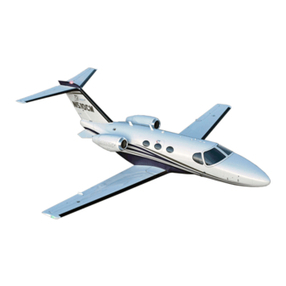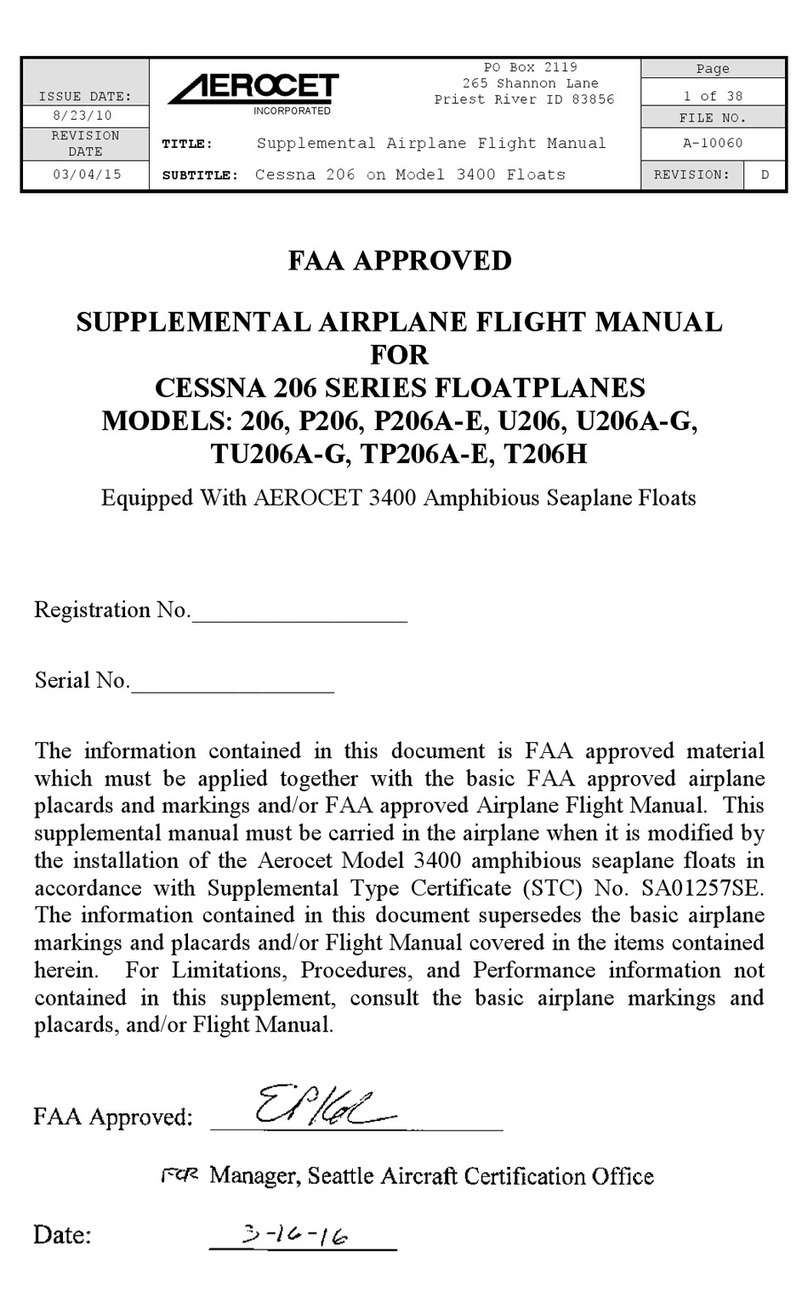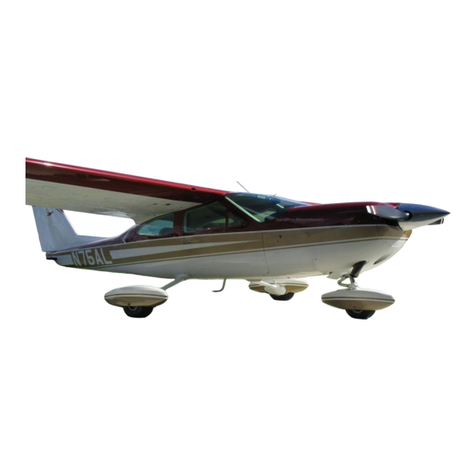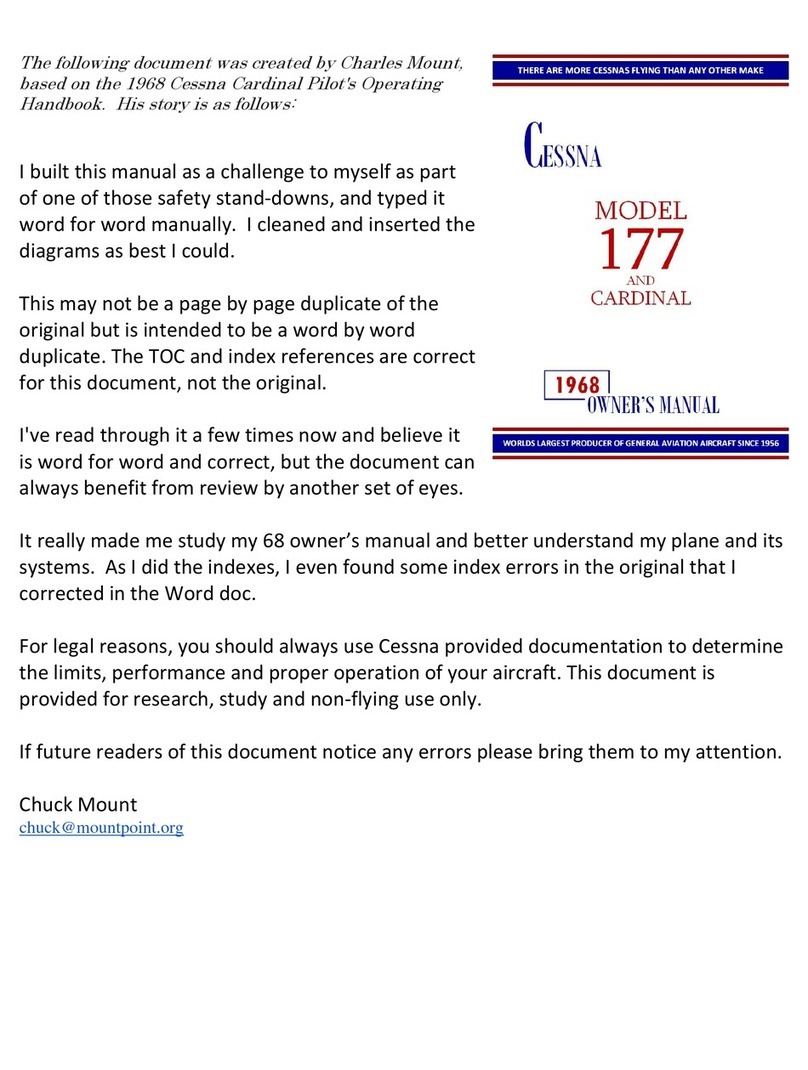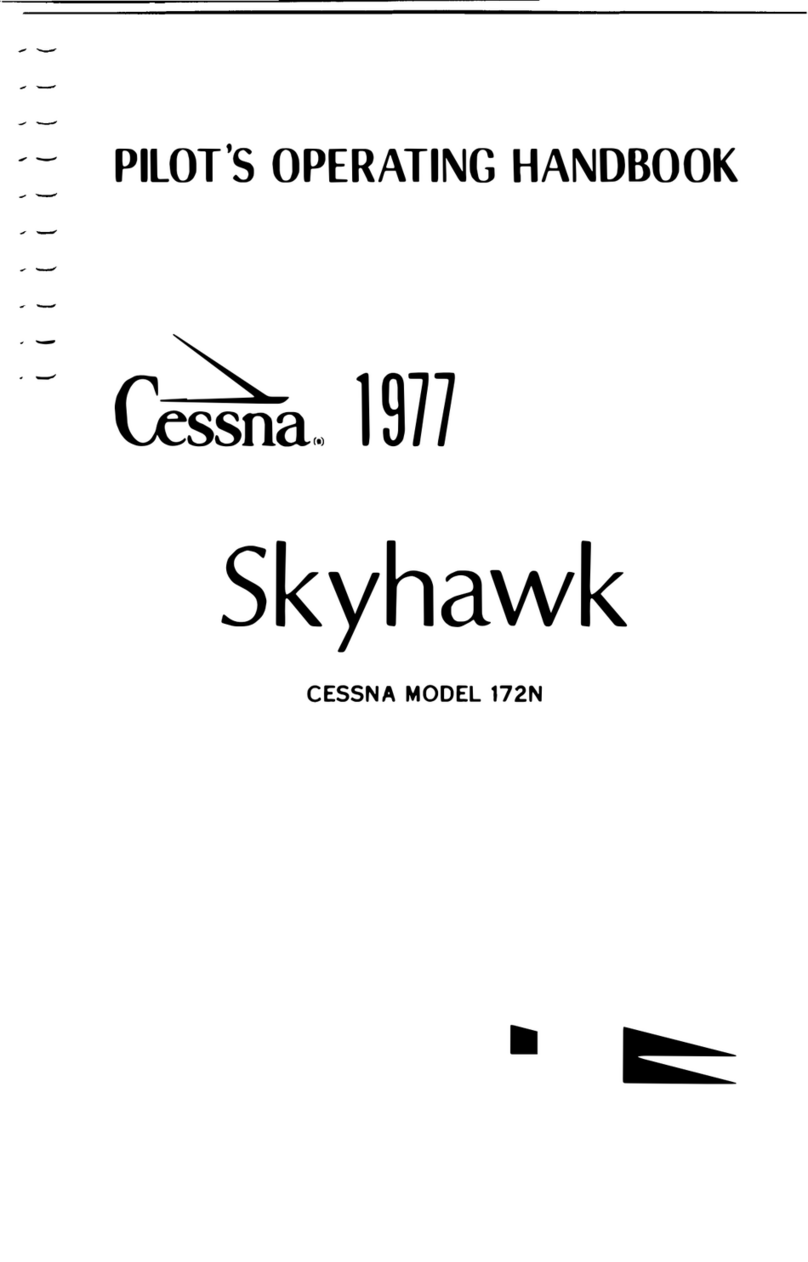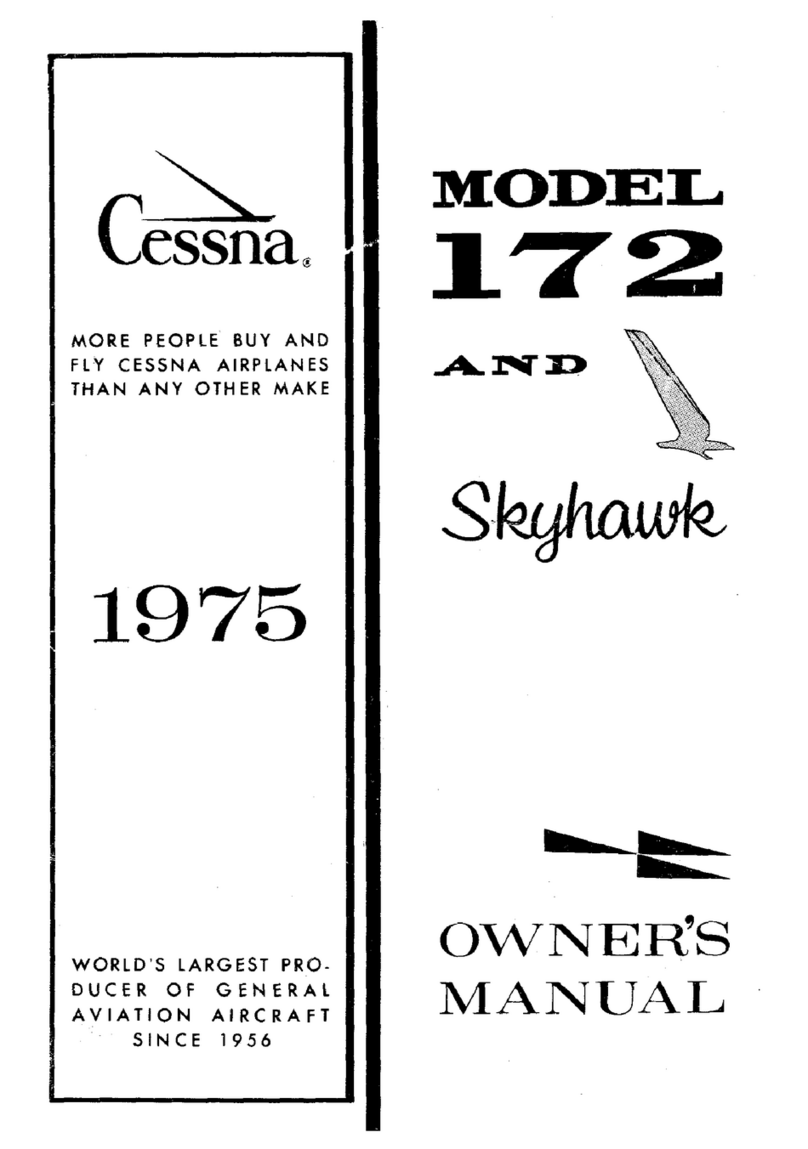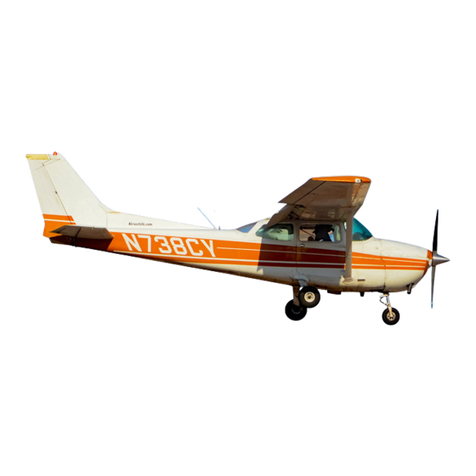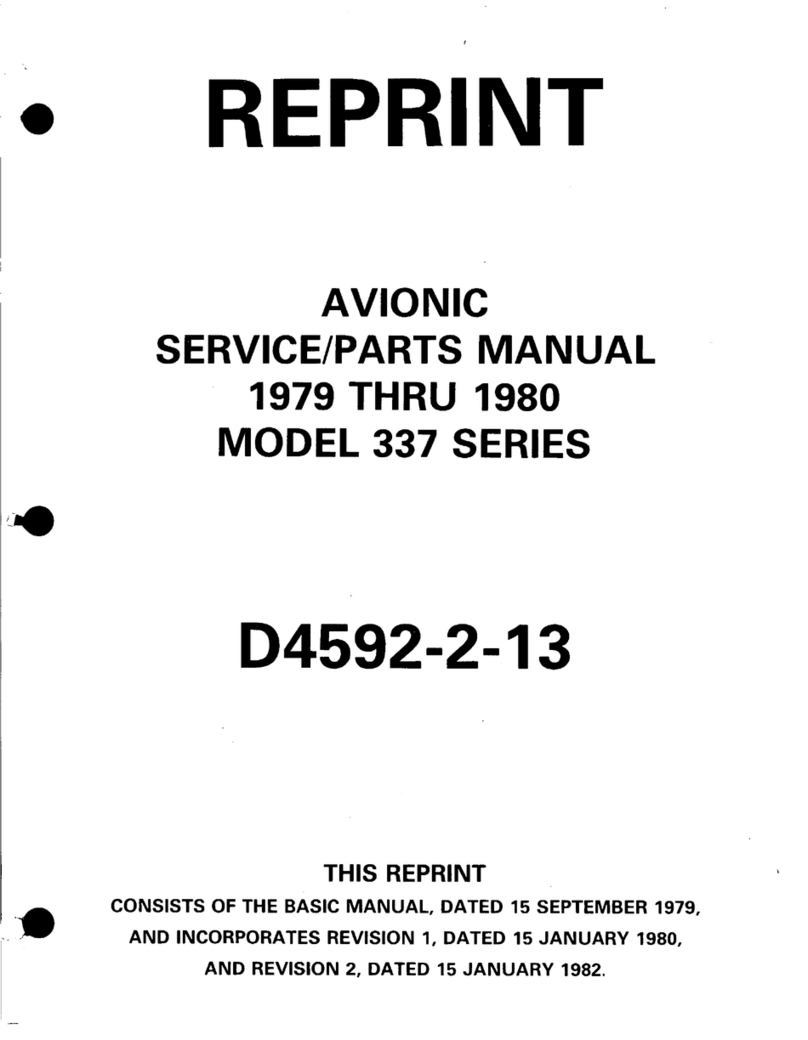filter, 4-7 S•
temperature gage, 1-4, 3-3
pressure gage, 1-4, 3-3 Sample Loading Problem, 3-4
Operation, Cold Weather, 2-11 Secure Aircraft, 1-3
Operation Limitations, Engine, 3-2 Service Ceiling, inside cover
Operations Authorized, 3-1 Servicing and Lubrication, 4-6 OPERATING CHECK LIST
Optimum Cruise Performance, 2-10 Servicing Intervals Check List, 4-7
Optional Instrument Space, 1-4 Servicing Requirements Table,
Owner Follow-Up System, 4-8 inside back cover
Shimmy Dampener 4-7 One of the first steps in obtaining the utmost performance, service,
Short Field Landing, 2-11 and flying enjoyment from your Cessna is to familiarize yourself with your
PShut-Off Valve Fuel, 2-2 airplane's equipment, systems, and controls. This can best be done by
Specifications -Performance, reviewing this equipment while sitting in the airplane. Those items whose
. . function and operation are not obvious are covered in Section II.
Painted Surfaces, 4-2 inside cover
Parking Brake Control, 1-4 eeeedd,S inC11dnebco2 Section Ilists, in Pilot's Check List form, the steps necessary to
Parking Brake System, 2-5 Stalls 2-10 operate your airplane efficiently and safely. It is not acheck list in its
Performance -Specifications' speed chart, 5-2 true form as it is considerably longer, but it does cover briefly all of the
inside cover Starter, 2-4 points that you should know for atypical flight.
Power, inside cover
..Starter Handle, 1-4, 2-4
Power Loading, inside cover Starting Engine 1-1, 2-5 The flight and operational characteristics of your airplane are normal
Primer, Engine, 1-4, 2-2 before, 1-1 in all respects. There are no unconventional characteristics or operations
Principal Dimensions, ii Strainer, Fuel, 2-1, 2-2, 4-6, 4-7 that need to be mastered. All controls respond in the normal way within
Propeller, inside cover Suction Relief Valve Inlet Screen, the entire range of operation. All airspeeds mentioned in Sections I and
care, 4-3 4-7 II are indicated airspeeds. Corresponding calibrated airspeeds may
Publications, 4-8 Surfaces, be obtained from the Airspeed Correction Table in Section V.
aluminum, 4-3
painted, 4-2
Sy stec in heating and ventilating, BEFOREENTER INGTHE AIRPLANE.
Quantity Data, Fuel, 2-1 2-5
Quantity Indicators, Fuel, 1-4, 3-3 electrical, 2-3 (1) Make an exterior inspection in accordance with figure 1-1.
fuel, 2-1
owner follow-up, 4-8
Rparking brake, 2-5 BEFORE STARTING THE ENGINE.
(1) Seats and Seat Belts -- Adjust and lock.
Radio, 1-4 T(2) Brakes -- Test and set.
Radio Transmitter Selector I(3) Master Switch -- "ON. "
Switch, 6-2 (4) Fuel Valve Handle -- "ON "
Range, inside cover Table of Contents, iii
Rate of Climb, inside cover Tachometer, 1-4, 3-3
Rate-of-ClimbDataTable, 5-3 Take-Off, inside cover, 1-2, 2-8 STARTING THE ENGINE
Registration Number, Aircraft, 1-4 before take-off, 1-2, 2-7
Regulator, Voltage, 2-4 crosswind, 2-9 (1) Carburetor gat -- Cold.
Index-4 1-1



